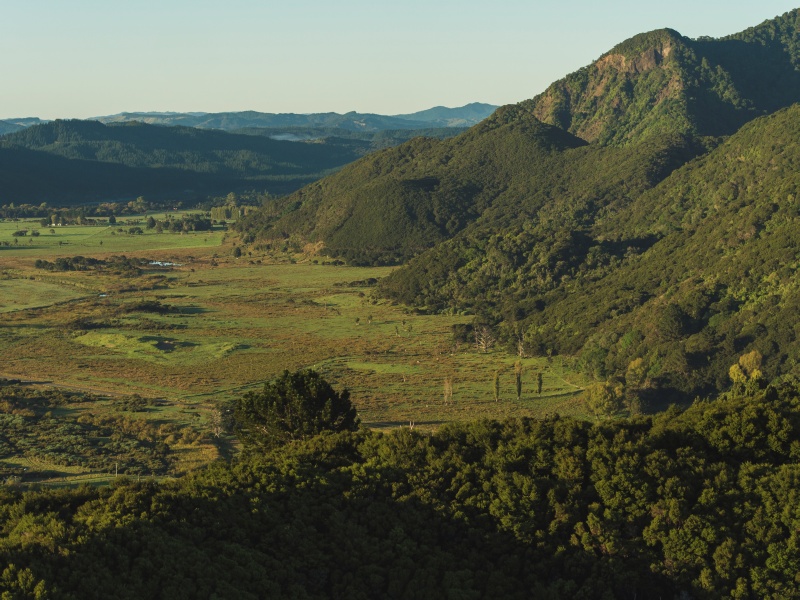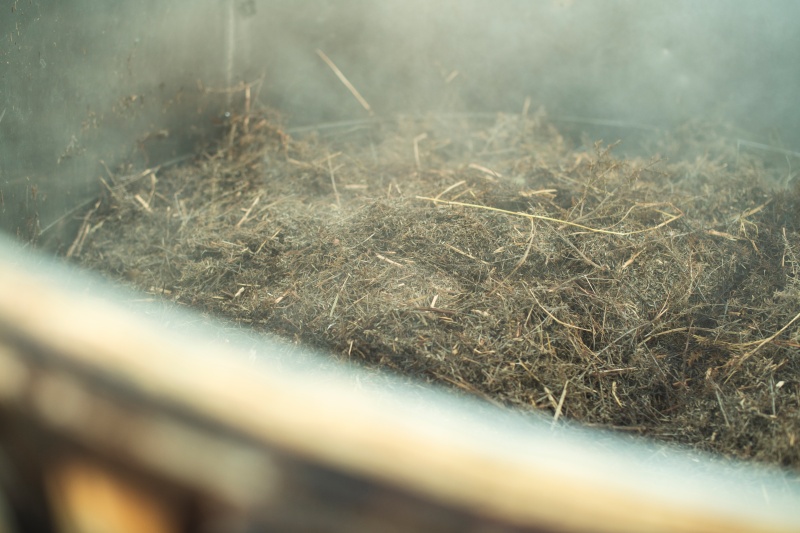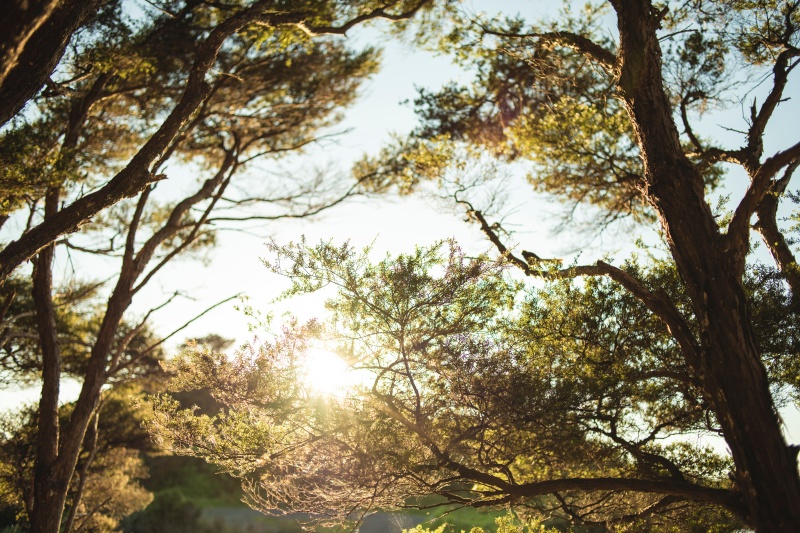From their abundant presence across New Zealand to the essential oils extracted from their leaves, mānuka and kānuka plants have become essential for promoting well-being.
Beyond their health benefits, these plants, in their natural habitat, play a crucial role in caring for the environment and contributing to ecological balance.
Mānuka Oil vs Kānuka Oil

Mānuka and kānuka trees are found abundantly throughout New Zealand. Despite their apparent similarities and shared classification in the Myrtaceae (myrtle) family, they possess notable genetic differences that set them apart from each other.
Mānuka essential oil was first identified in the 1970s and has been commercially produced since the 1980s. Today, it finds widespread use in skincare, cosmeceuticals, and topical medications. Thorough research, including over 1,000 peer-reviewed studies, has explored its antimicrobial, anti-inflammatory, antioxidant, and wound-healing properties, along with its compatibility with other active ingredients.
On the other hand, kānuka essential oil has been in commercial production since the 1990s, showcasing noticeable anti-inflammatory and antibacterial traits. A recent clinical trial using a 3% kānuka oil cream displayed potential as a safe, effective, and well-tolerated treatment for moderate-to-severe eczema in adults. It’s essential to recognise that there is comparatively less independent research on the therapeutic properties of kānuka oil, with around 200 peer-reviewed studies, in contrast to the extensive research conducted on mānuka oil.
How Are Mānuka Seeds Dispersed?
Mānuka seeds are dispersed far and wide through their seed capsules, which split open to release numerous tiny seeds. These seeds, characterised by their small size and the absence of pappus attachments, can be carried by the wind. Remarkably, each seed capsule holds approximately 100 seeds, allowing for the rapid colonisation of new areas. This is particularly beneficial in reforestation efforts, as it facilitates the expansion of mānuka in regions where vegetation restoration is desired. Mānuka exhibits an exceptional ability to grow with minimal nutrient requirements, even in locations where soil is scarce.
How Does Mānuka Help in Reforestation?
Mānuka and kānuka play a crucial role as seral plants in reforestation efforts, contributing significantly to the restoration of natural environments.
Within forested landscapes, the different vegetation communities that appear on disturbed sites and collectively form a succession are referred to as “seral stages.” These seral-stage communities encompass various types of vegetation that have adapted to the specific physical and biological conditions of the site.
As seral plants, they act as intermediaries in the process of turning barren or degraded land into healthy and flourishing forests.
These plants have a remarkable ability to swiftly establish themselves in areas with little or no vegetation, especially on bare slopes. By doing so, they create a favourable environment that supports the growth of other native plant species. This characteristic makes mānuka and kānuka essential components in the journey of ecological restoration.
What Are the Key Benefits of Mānuka in Land Conservation?
Unlike many other native plants, mānuka plants are not typically consumed by browsing animals, making them valuable for restoration projects. Here are the other advantageous roles of mānuka and kānuka in preventing land erosion:
Preventing Grazing Damage
- Mānuka/kahikātoa and kānuka are not typically consumed by grazing animals, including sheeps, cattles, and goats.
- Valuable in restoration projects due to their resistance to being eaten by browsing animals.
Reducing Pest Population
- Planting mānuka and kānuka on marginal land tends to decrease the number of pests such as rabbits, possums, and wallabies.
- Benefits the surrounding area by controlling pest populations.
Erosion Prevention and Soil Stability
- Rapid growth and development of deep, flexible root systems.
- Binds unstable soil together, preventing erosion around waterways and hills.
Weather Event Resilience
- During Cyclone Bola in 1988, areas planted with mānuka and kānuka suffered significantly less erosion and land slippage compared to pasture.
- Demonstrates effectiveness in erosion control and resilience to severe weather events.
The Role of Mānuka in Forest Regeneration

In the event of forest fires, mānuka serves as a natural safeguard for native forests across New Zealand. When the fire consumes the forests containing mānuka trees, the seed capsules burst, facilitating quick regrowth once the fire subsides.
This unique feature provides an important safety net for the preservation and longevity of the country’s wild areas. Mānuka’s resilience and role in regeneration make it a valuable contributor to the health and sustainability of New Zealand’s natural landscapes.
What Is Mānuka’s Contribution to Biodiversity?
Mānuka makes a valuable contribution to biodiversity through several important ways:
- Providing Habitats: Mānuka and kānuka plantations create nurturing environments for slower-growing native trees, establishing homes that support a diverse range of plants and animals.
- Diverse Insects: Studies show that 60-year-old kānuka forests, including areas with mānuka, have a variety of insects similar to primary forests. This diversity helps sustain a rich ecosystem with native geckos, skinks, and insect-eating birds.
- Attracting Insects: Mānuka flowers draw different insects, not just honey bees, as found in a study by the Department of Conservation. This insect activity contributes to the overall variety of life in the ecosystem.
- Health of the Ecosystem: Biodiversity is essential for forest health, and each living creature in mānuka areas plays a vital role in maintaining the overall well-being of the ecosystem. Mānuka’s ability to create diverse habitats and attract various species highlights its positive impact on the variety of life in natural surroundings.
Practices for Responsible Mānuka Harvesting
Using sustainable harvesting methods is crucial to making sure that mānuka resources last a long time and creating a strong and reliable supply chain. Here are some methods that help mānuka stay sustainable:
- Sustainable practices involve selectively harvesting mānuka plants, allowing for the regeneration of the population over time.
- This method ensures that a portion of the plants remains untouched, allowing them to continue their natural growth and seed dispersal.
Rotation Cycles:
- Adopting rotation cycles for harvesting areas helps prevent overexploitation of specific regions.
- This approach allows mānuka ecosystems to recover and maintain their ecological balance, ensuring the sustained health of the plants.
Monitoring and Regulation:
- Continuous monitoring of mānuka stands helps assess the health of the plants and the impact of harvesting.
- Regulatory measures, such as quotas and guidelines, are often implemented to prevent excessive harvesting and protect the long-term viability of mānuka resources
Promoting Natural Regeneration:
- Encouraging natural regeneration through proper management practices, including leaving certain areas untouched, supports the growth and resilience of mānuka ecosystems.
- Allowing plants to mature and produce seeds contributes to the natural dispersal and expansion of mānuka stands.
Community Involvement:
- In sustainable harvesting models, local communities are often involved in decision-making processes.
- Community engagement promotes a sense of responsibility and stewardship, promoting the sustainable management of mānuka resources.

